Minimalist decor can turn a living room into a peaceful haven. The key is embracing the philosophy of minimalist interior design. It values simplicity, functionality, and natural light. This way of decorating is not just a trend; it’s a lifestyle that brings calm and clarity to your home.
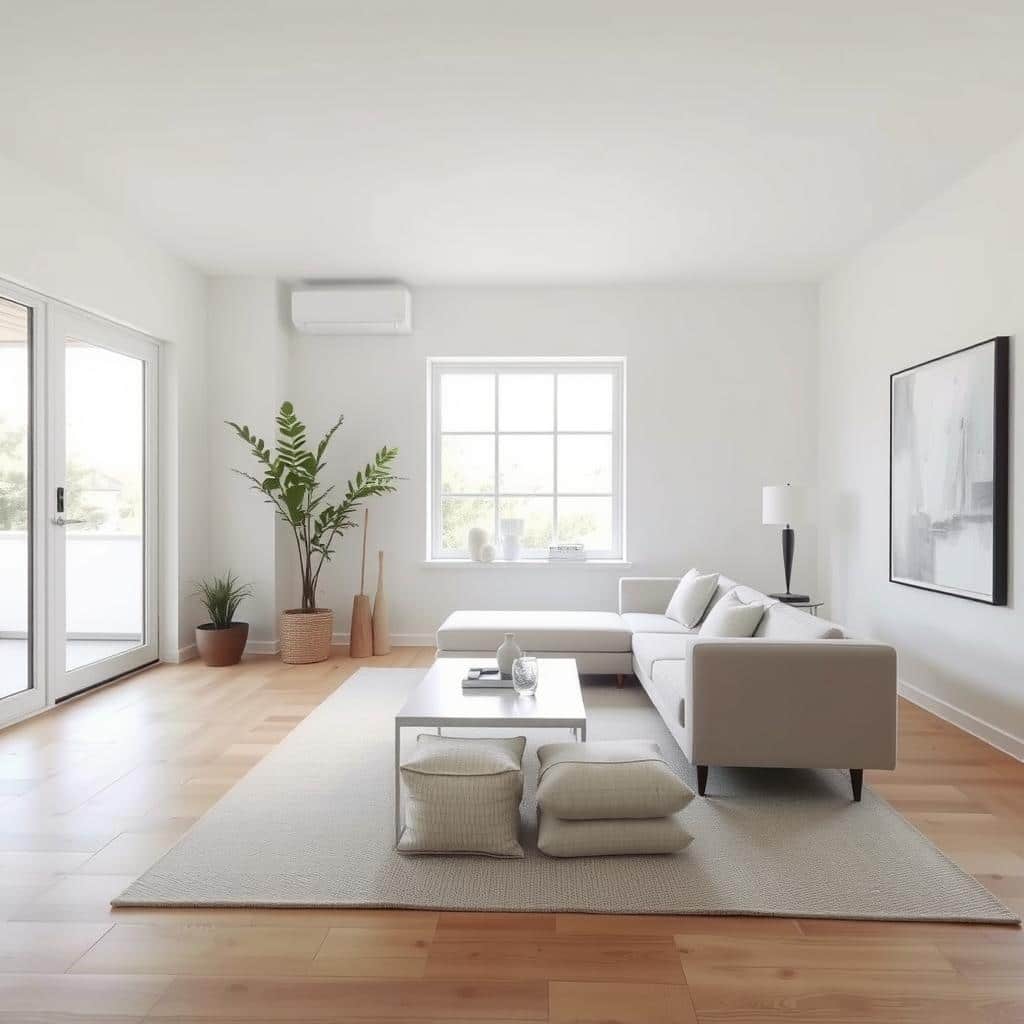
At the core of minimal interior design is a deep respect for simplicity. It focuses on essential elements like form, light, and materials. This creates a dramatic, harmonious space that engages the senses. Whether you prefer the clean lines of modern minimalist interior design or the calm neutrals of a minimalist style interior, it can make any living room a peaceful sanctuary.
What is Minimalist Interior Design?
Minimalist interior design is all about simplicity and intention. It focuses on creating clean, functional spaces. These spaces promote calm and clarity.
At its core, it’s about removing the unnecessary. This lets the beauty of materials and forms shine through.
Defining the Philosophy of Minimalism
The minimalist philosophy is about living intentionally. Every element in a space must have a purpose. This adds value to the design.
Minimalist interiors often use a single color and have clean lines. They focus on natural materials and textures. The goal is a harmonious, functional space.
Characteristics of Minimalist Spaces
- Neutral colors like whites, grays, and beiges create a calm atmosphere.
- Natural elements like wood, stone, and plants add warmth and texture.
- Open layouts with lots of natural light make spaces feel spacious and flow well.
- Only the best, multipurpose furniture and decor are chosen.
- Quality is more important than quantity, with a focus on durable materials.
Minimalist design balances form and function. It creates spaces that are beautiful and practical. By embracing minimalism, homeowners can enjoy a peaceful, clutter-free environment.
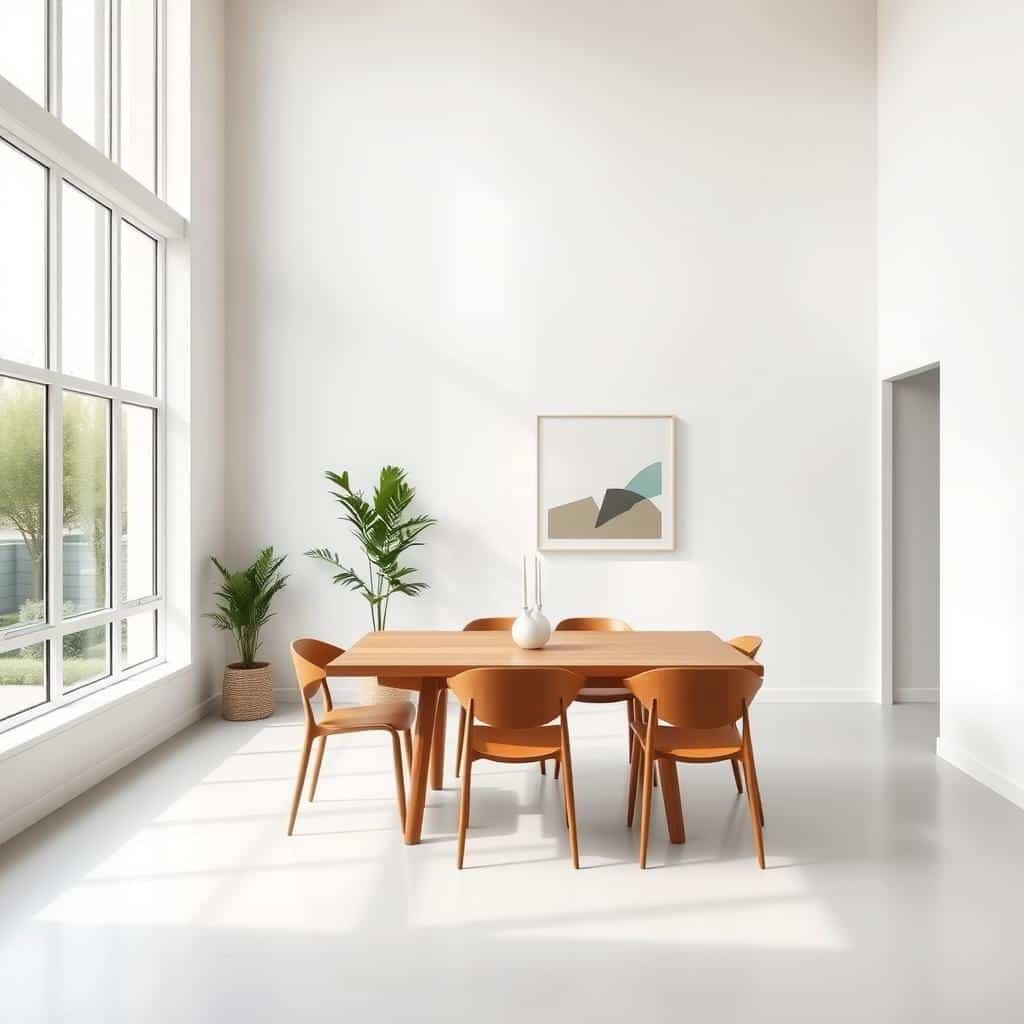
The Benefits of Embracing Minimalism
Choosing minimalism interior design brings many benefits. It makes spaces feel calm and clear, improving both body and mind. Plus, it makes cleaning and upkeep simple, saving time for fun activities. Minimalism also supports sustainable living by valuing quality over quantity, cutting down on waste.
Promoting Calm and Clarity
Research shows clutter can make us stressed. A 2010 study found clutter hinders focus and concentration. But, working in tidy spaces boosts efficiency, as shown by the University of California.
Easier Maintenance and Sustainability
Minimalist design is also practical. It means less to clean and maintain, giving more time for hobbies. It also often uses eco-friendly materials and saves energy, fitting well with green living.
Minimalist design’s benefits for mind and planet make it a smart choice. It’s good for you and the environment.
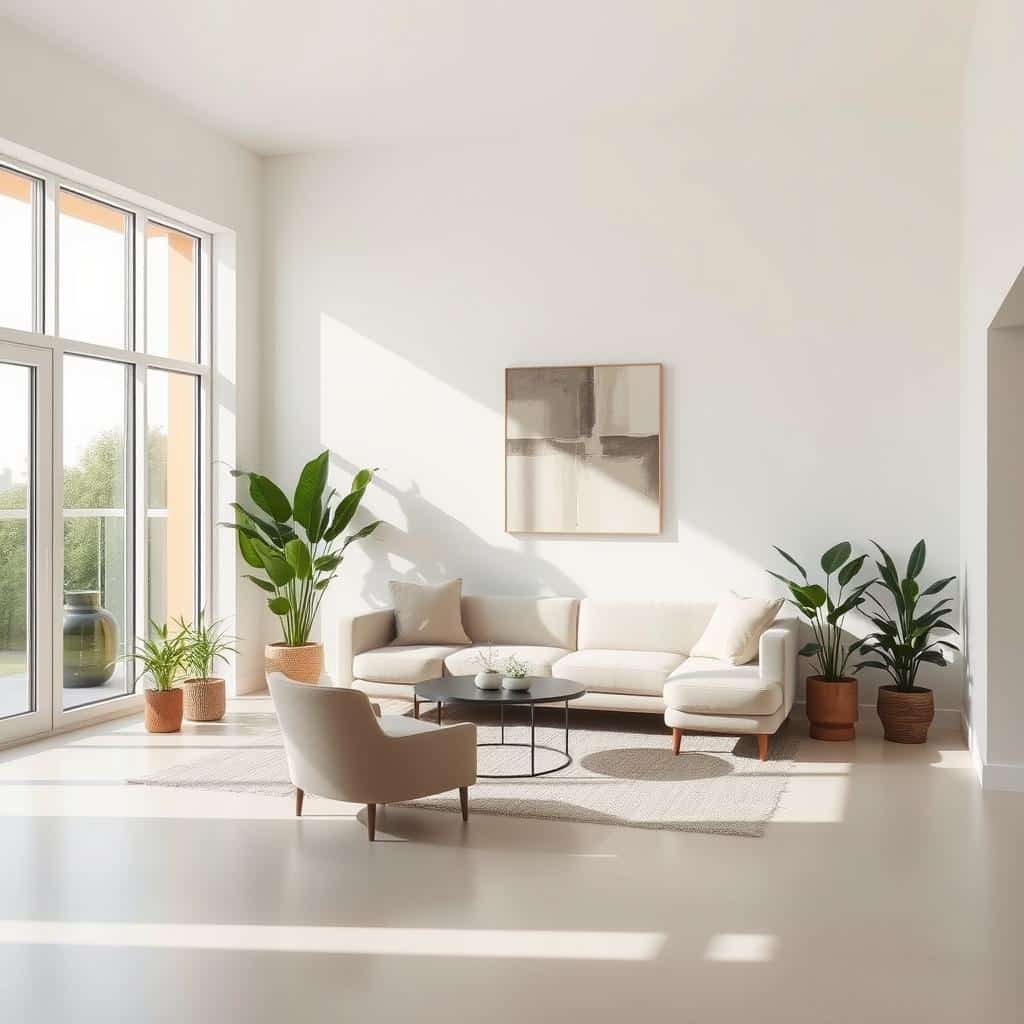
Start with Decluttering
Decluttering is the first step to a minimalist home. Go through your stuff, sorting into keep, donate, and discard piles. Be tough; keep only what’s useful or brings you joy. Letting go can free you and set the stage for a minimalist home.
People often wonder about sentimental items and family heirlooms. They ask about books and kids’ toys too. And what if your partner’s clutter is a problem? Decluttering is like training for a marathon; be patient and focused.
Begin with small tasks, like cleaning a drawer or organizing a bookshelf. This builds your confidence and shows the benefits of a tidy space.
- Make your bed every day to feel accomplished and start the day right.
- Declutter for just five minutes daily to make your home more peaceful.
- Clear your desk or workspace each day to stay focused and productive.
- Clean common areas before bed to reduce morning stress and simplify your life.
The path to minimalist design is a marathon, not a sprint. Enjoy the journey, celebrate small wins, and revel in the calm of a clutter-free home.
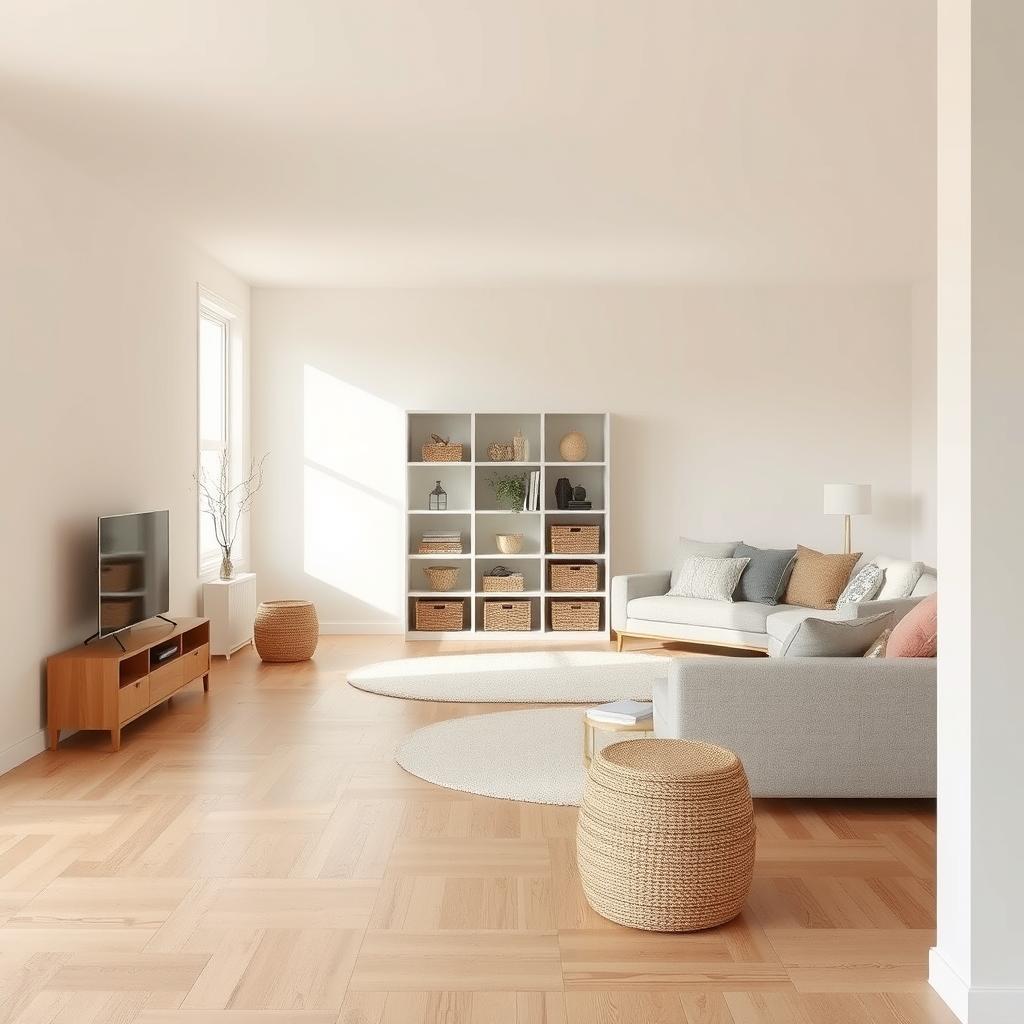
Choose a Neutral Color Palette
A neutral color palette is key for a minimalist style interior design. Shades of oatmeal are popular for their warm touch. They pair well with natural woods and linen, adding depth and character.
BEHR‘s Whipped Cream, Even Better Beige, and Tranquil Gray are top picks. These soft shades bring a clean, simple look. Adding calming greens like forest or sage can add warmth without losing the minimalist feel.
Using natural materials like wood or stone boosts the minimalist vibe. Mixing textures like stone, wood, and fabrics adds depth and sophistication. This keeps the space looking minimalist.
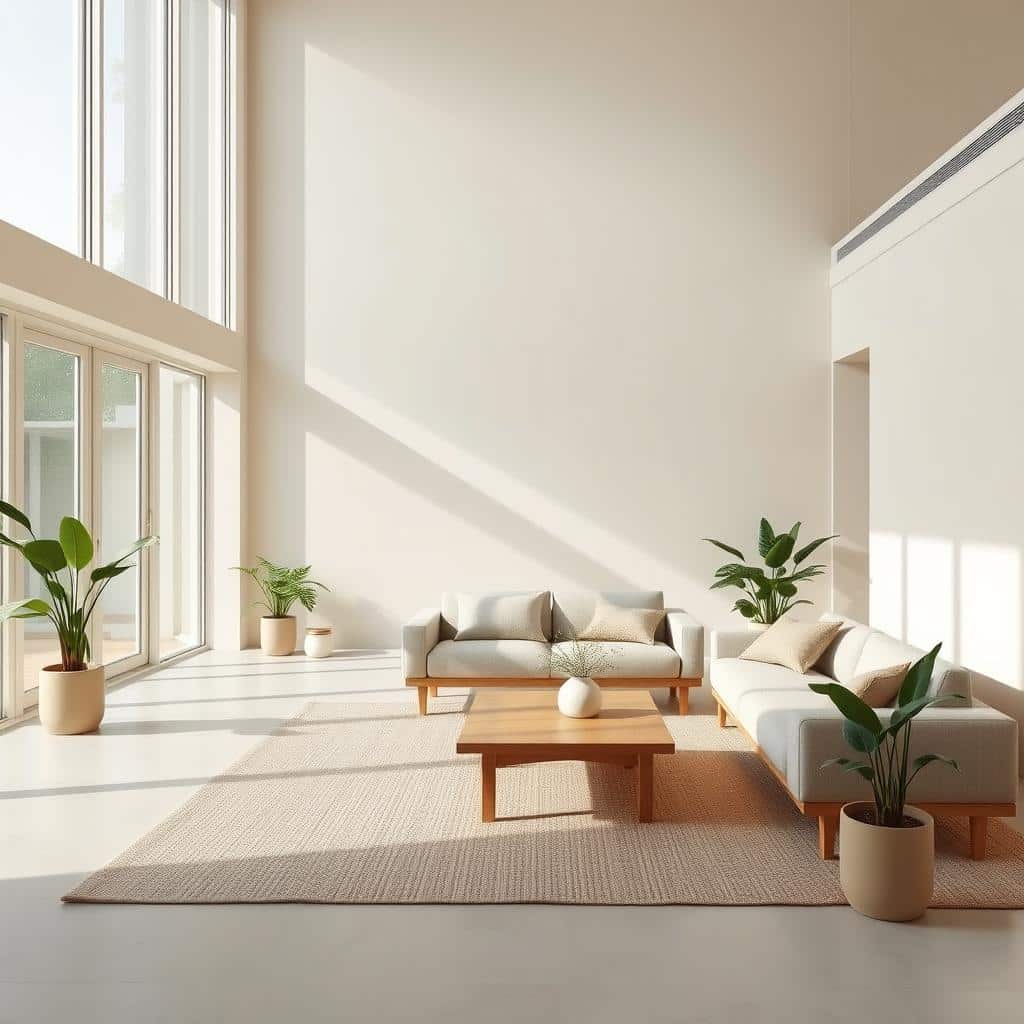
A neutral color palette is versatile and easy to mix. Soft, earthy hues in textiles, artwork, and plants keep the minimalist look. This way, you can add color without losing the minimalist feel.
Minimalist Interior Design
Minimalist interior design is about making your living space calm and intentional. It’s all about simplicity, function, and purpose. By choosing the right furniture and decor, you can make your home tidy and peaceful.
At the heart of minimalist design is decluttering. This means getting rid of things you don’t need. A clean space looks good and helps you stay organized and focused.
The color palette is also key. Minimalists often use neutral colors like white, gray, and beige. These colors make the space calm and let the design stand out.
Adding natural elements is important too. Wood, stone, and plants add warmth and texture. They balance the clean look and neutral colors.
Functionality is another big part of minimalist design. Furniture and decor are picked for their usefulness. This makes the space look good and work well.
Having open spaces is crucial. Minimalist spaces feel big and calm because they’re free of clutter. This makes the room feel airy and peaceful.
In summary, minimalist modern house interior aims to create a peaceful and focused home. By following these principles, you can make your home a calm and organized space that fits your style.
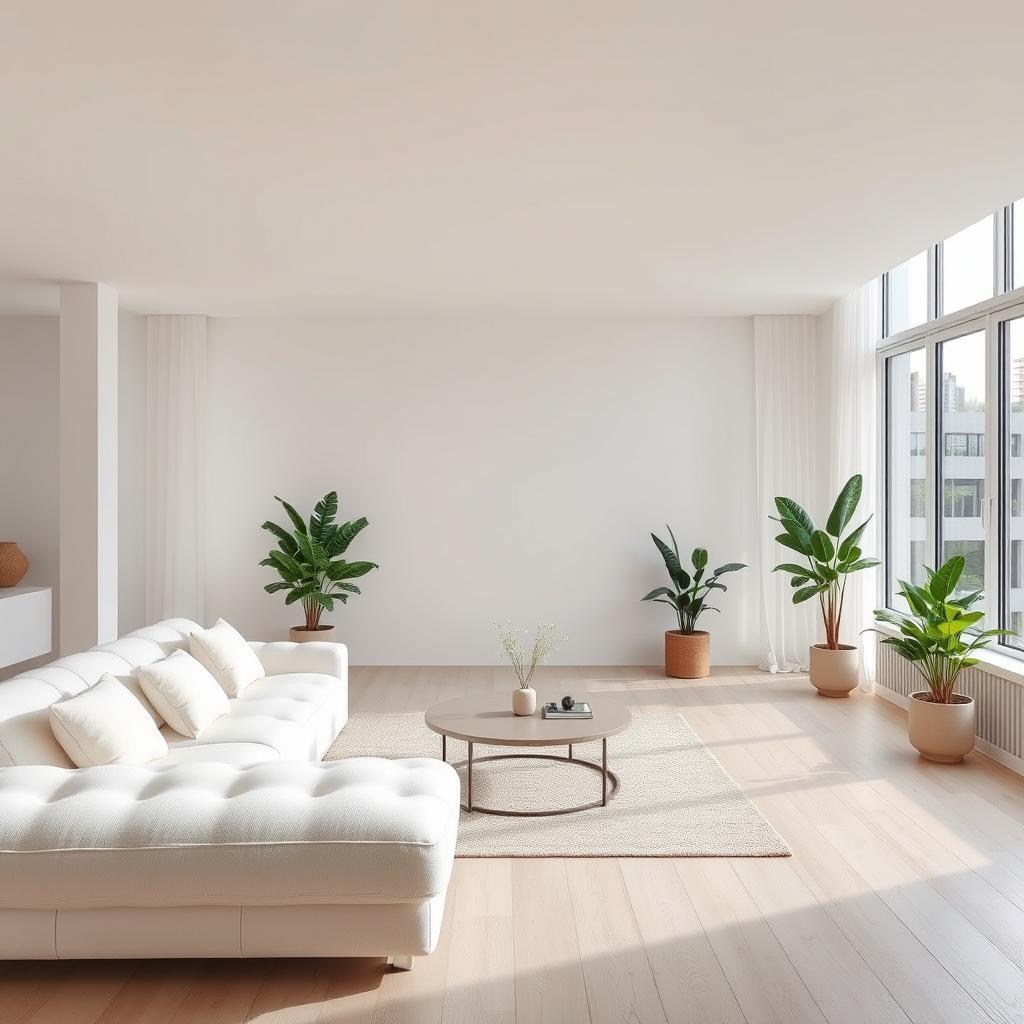
Bring Nature Inside
Adding natural elements can warm up a minimalist home. It brings in texture and calm. By using natural elements in minimalist interior design, you can mix the clean look of minimalism with nature’s beauty.
Natural Elements for Warmth and Texture
Wood, stone, and plants soften the look of minimalist spaces. Wooden furniture, like a rustic dining table, adds a natural feel. Potted plants, from ferns to succulents, make the room lively.
Natural-fiber textiles, like jute rugs, also add to the integration of nature into minimalist home design.
| Natural Element | Benefit |
|---|---|
| Wood | Adds warmth and texture |
| Stone | Enhances the earthy, organic feel |
| Plants | Bring a living, vibrant presence |
| Natural-fiber textiles | Contribute to the cozy, inviting ambiance |
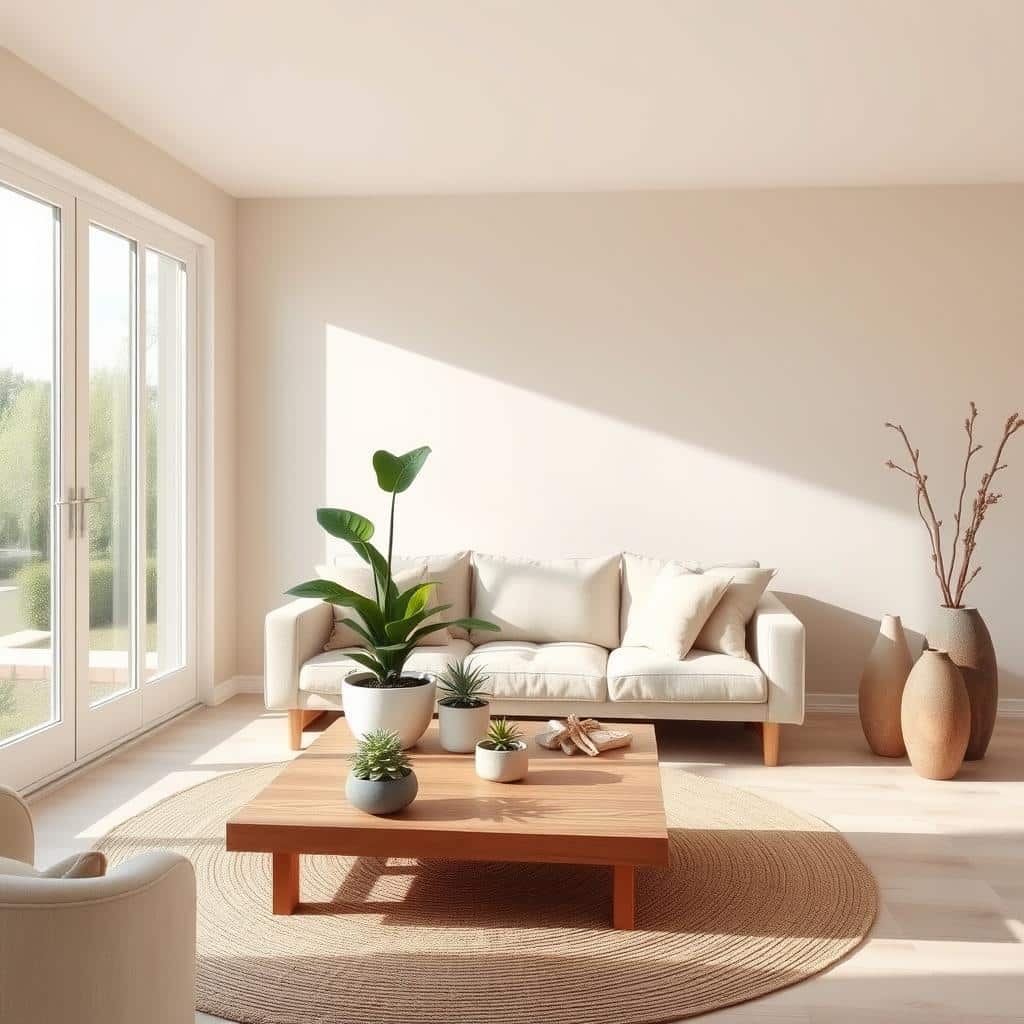
By adding these natural elements in minimalist interior design, you can make a peaceful and balanced space. It shows the beauty of minimalism and nature.
Focus on Functional Furniture
Minimalist interior design is gaining popularity. It focuses on furniture that is simple and clean. The colors used are mostly neutral, like black, white, and grey. This creates a calm and peaceful atmosphere.
Functional furniture is crucial in minimalist design. Pieces like storage ottomans and extendable tables save space. They help keep your home tidy and stylish.
Minimalist design uses space wisely and promotes sustainability. Each piece of furniture has a purpose. This reduces clutter and makes your home look better and feel more relaxed. It also supports eco-friendly living.
Choosing functional furniture makes your home look good and work well. It helps you enjoy a tidy and efficient living space.
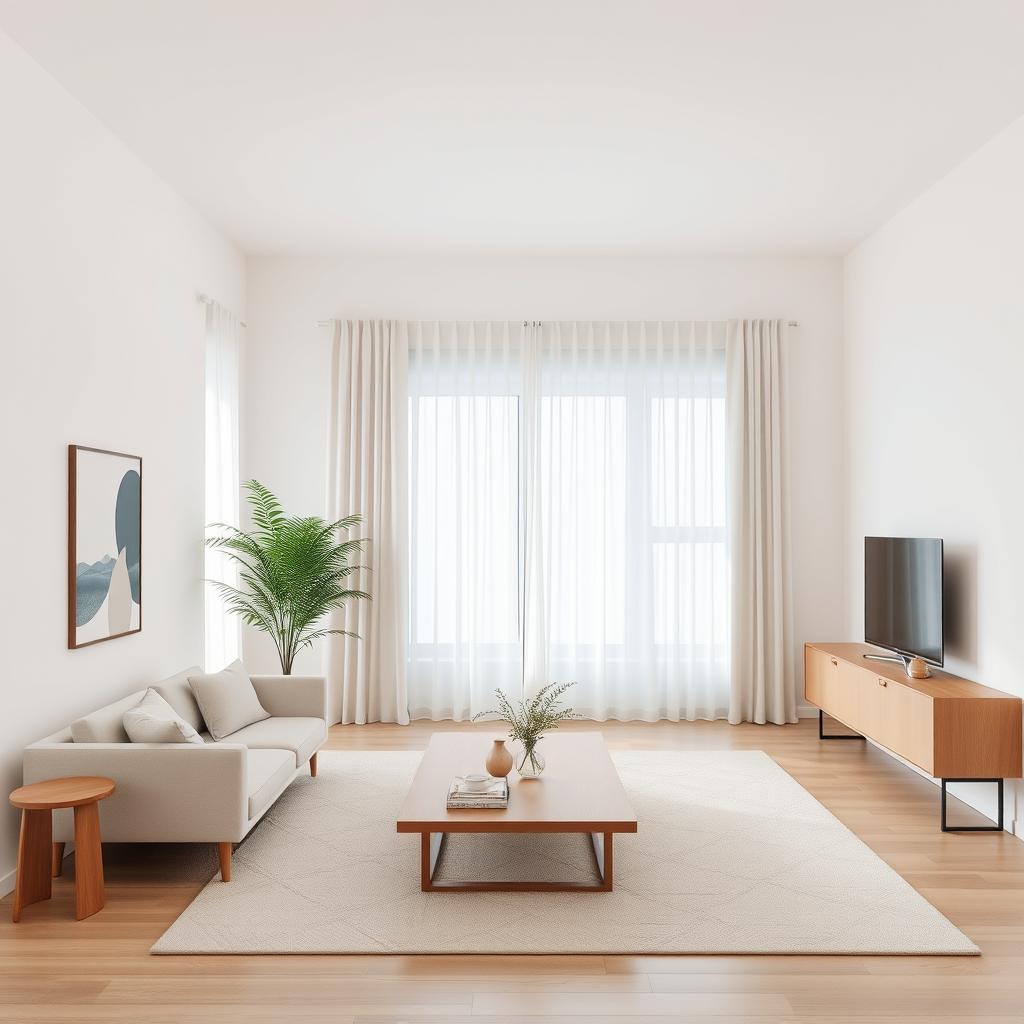
Embrace Open Spaces
Minimalist interior design loves open and airy layouts. It makes your home feel big and clear. By placing furniture smartly and leaving some areas empty, you get a smooth flow.
This design lets each piece stand out. It makes your home feel calm and balanced.
Creating a Sense of Airiness
A big part of minimalist interior design with open floor plan is open spaces. Choose furniture and decor that don’t clutter the room. Place them to make moving around easy.
This way, your home feels airy and free. It invites you to relax and enjoy your space.
Open spaces also let in more natural light. This makes your home’s minimalist look even better. It creates a calm and simple beauty.
| Design Element | Importance in Minimalist Interiors |
|---|---|
| Open Layout | Enhances the sense of spaciousness and clarity |
| Natural Light | Accentuates the minimalist aesthetic and creates a serene atmosphere |
| Carefully Placed Furniture | Allows for easy movement and showcases each design element |
| Intentional Negative Space | Fosters a feeling of calmness and balance |
By following minimalist design, you can make your home a peaceful place. Every piece is chosen to make your space calm and refreshing.
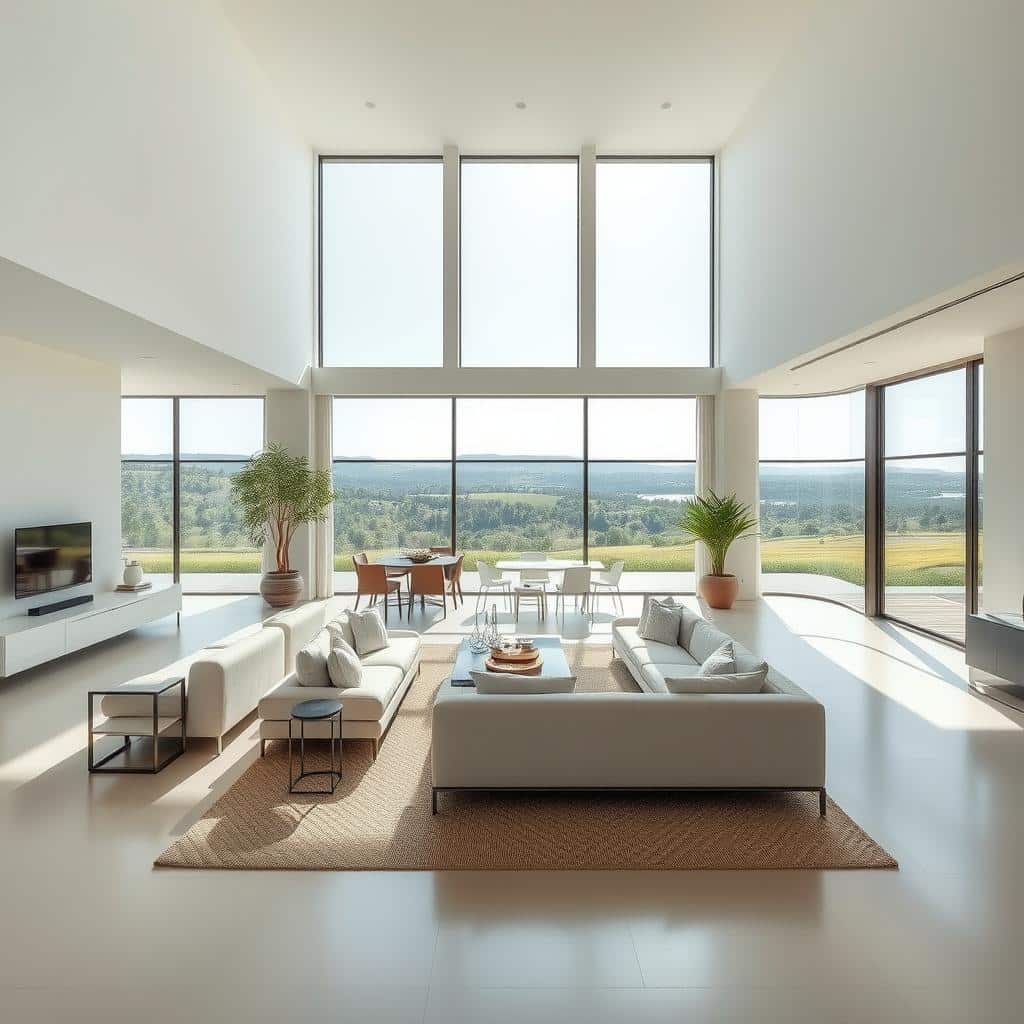
Keep Decor Simple and Meaningful
In the world of minimalist interior design, “less is more” is the rule. Home decor should focus on a few special items that show your style and add character. This way, your space feels intentional and clutter-free.
Neutral colors like whites, grays, and blacks are popular for their calm feel. Furniture with clean lines is key, making spaces both useful and beautiful. A few decorations, like paintings or vases, add character without cluttering the space.
Natural elements like wood, stone, and metal bring warmth and a nature connection. Big windows and minimal curtains let in lots of natural light, making rooms feel fresh. Smart storage solutions, like hidden cabinets, keep things tidy.
Simple accessories, like high-quality textiles, are preferred to avoid clutter. By choosing a few meaningful pieces, you can create a minimalist home that’s both beautiful and personal.
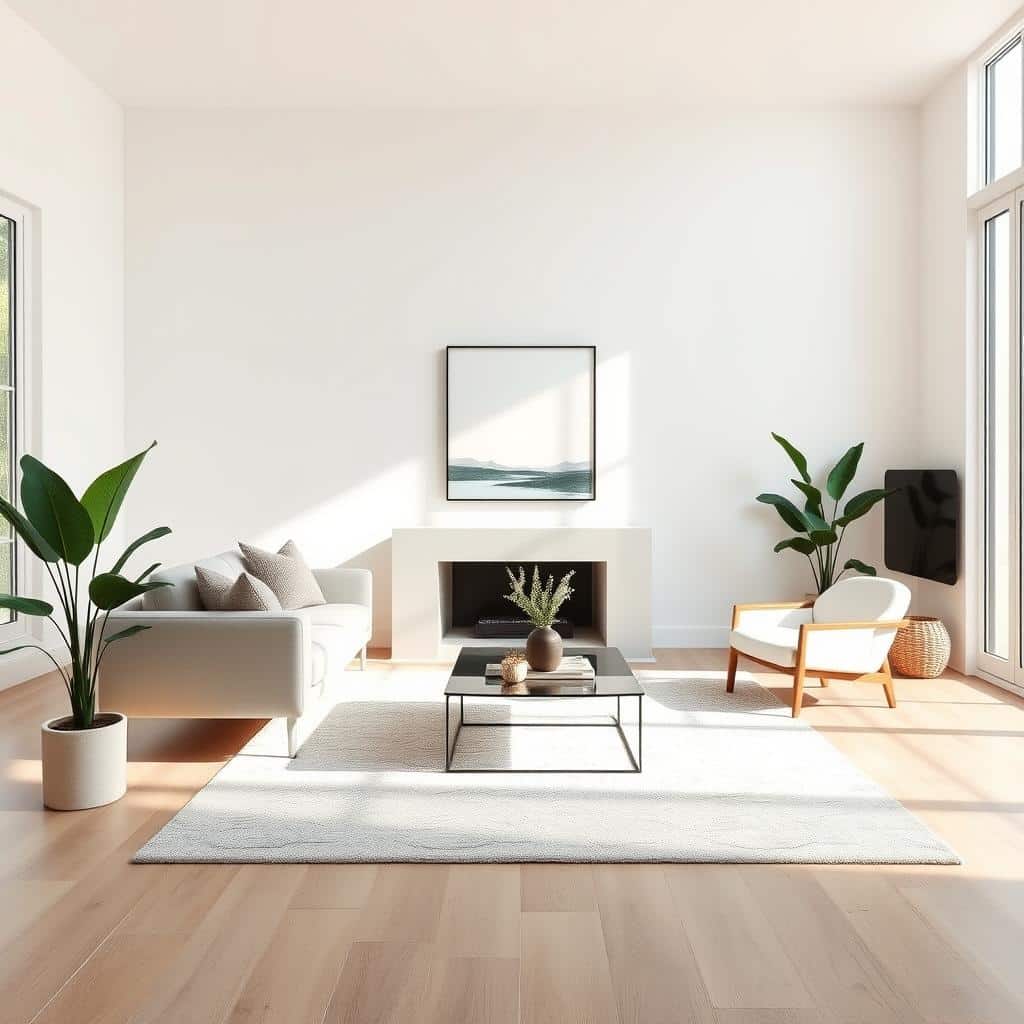
Prioritize Natural Light
Natural light is essential in minimalist design. It makes spaces feel open and calm. It also boosts your mood and productivity.
The Importance of Natural Illumination
Getting lots of natural light is vital in minimalist homes. It makes rooms feel bigger and more welcoming. This aligns with minimalism’s focus on simplicity.
Using mirrors and sheer curtains helps bring in more light. This creates a peaceful and harmonious space.
Natural light also has practical benefits. It can make you happier, more productive, and healthier. By focusing on natural light, you support your mental and physical health. This is in line with the mindful lifestyle of minimalism.
Benefits of Natural Light in Minimalist Interiors
- Enhances the sense of openness and spaciousness
- Improves mood and overall well-being
- Increases productivity and focus
- Aligns with the principles of minimalist design
Strategies to Maximize Natural Light
- Use sheer curtains or blinds to allow natural light to flow in
- Strategically place mirrors to reflect and amplify natural light
- Avoid heavy window treatments that can block natural illumination
- Choose light-colored, reflective surfaces for walls and floors
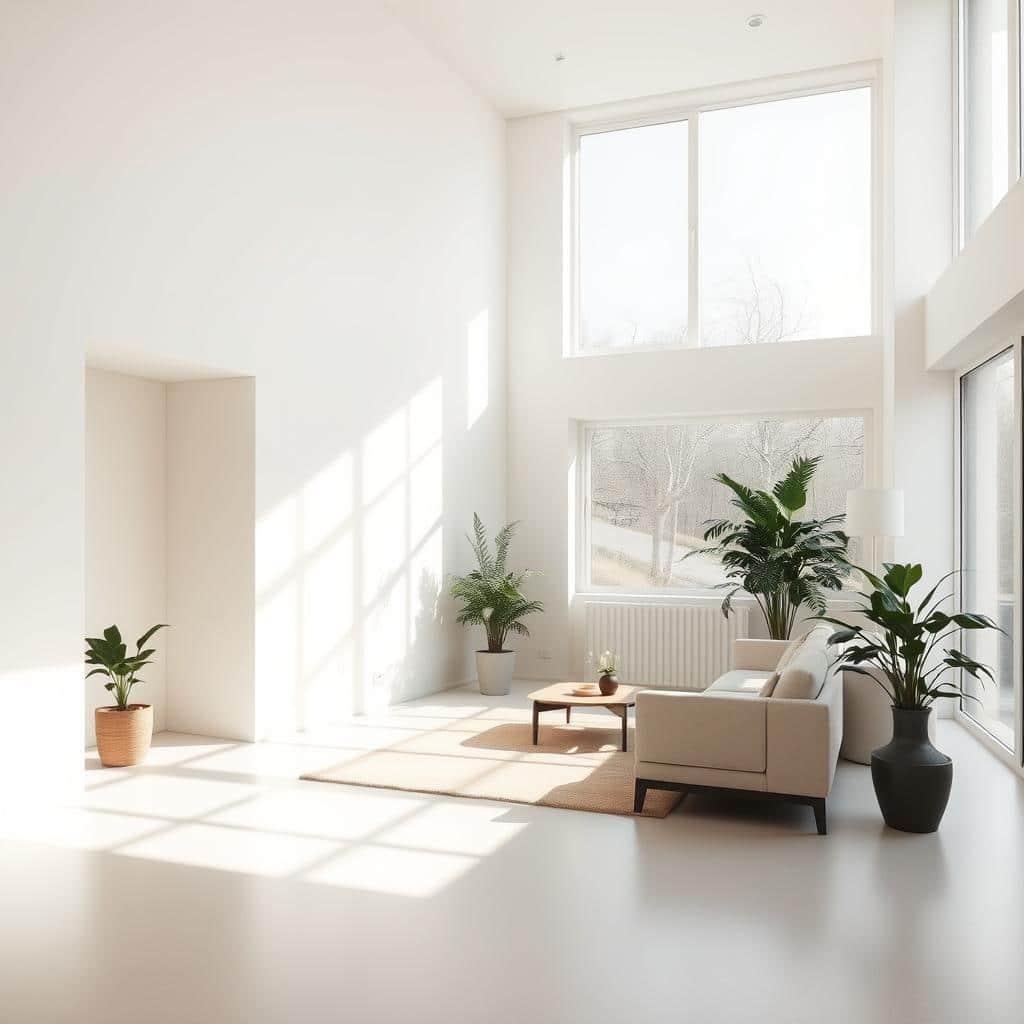
By focusing on natural light, you create a space that’s both calming and supportive. It aligns with the core values of minimalism.
Choose Your Storage Carefully
Keeping a minimalist home tidy means choosing the right storage. It’s all about hiding clutter and keeping things simple. This way, you get a clean, open feel that’s key to the minimalist look.
Creative Solutions for Clutter-Free Living
Find smart ways to stash your stuff, like built-in shelves or hidden spots. These solutions keep your space looking neat and organized. Make sure to tidy up your storage often to keep it useful and stylish.
Using minimalist storage helps you maintain a tidy, calm home. It’s all about hiding mess and creating a peaceful space. This makes your home feel serene and clear.
| Minimalist Storage Solutions | Benefits |
|---|---|
| Built-in Shelves | Maximize vertical space, keeping surfaces clear |
| Under-Bed Storage | Utilize unused space for storing items |
| Hidden Compartments | Conceal clutter and maintain a clean, uncluttered look |
| Multipurpose Furniture | Incorporate storage within functional pieces |
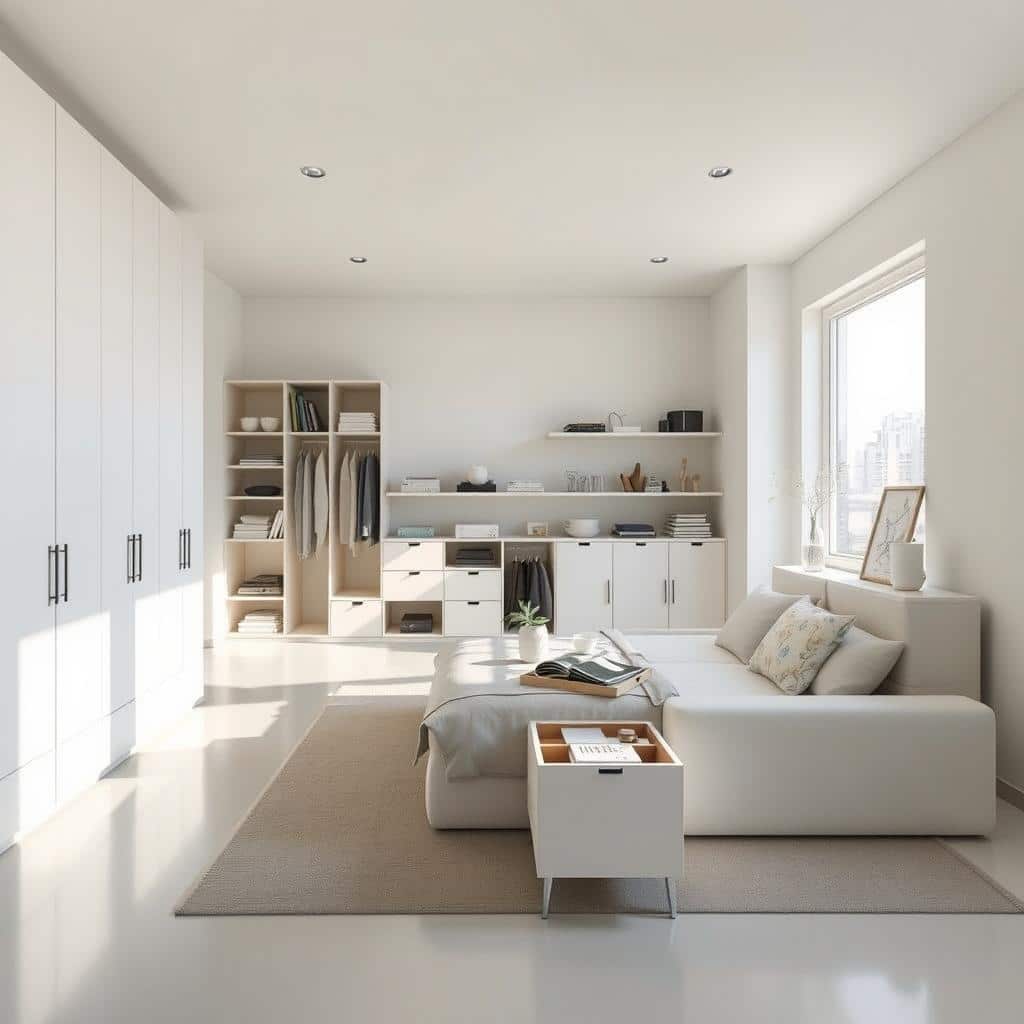
By picking the right storage, you can keep your home tidy and peaceful. This follows the minimalist design principles perfectly.
Balancing Personalization and Minimalism
Minimalist design doesn’t mean you can’t add your personal touch. In fact, adding elements that show your style can make your home feel warmer and more unique. Use neutral colors as a base and add meaningful accents. Add textures like wood or soft fabrics to make the space interesting without clutter.
It’s important to pick a few special items that mean something to you. This way, your home stays simple yet personal. Minimalism is about keeping things simple and focused. Mixing personal touches with minimalism makes your home welcoming and stylish.
Choosing neutral colors helps balance your space. Add unique pieces that show your personality. This way, your home feels special without being too busy. Minimalist design can make your space calm and peaceful, where your personal touches stand out.
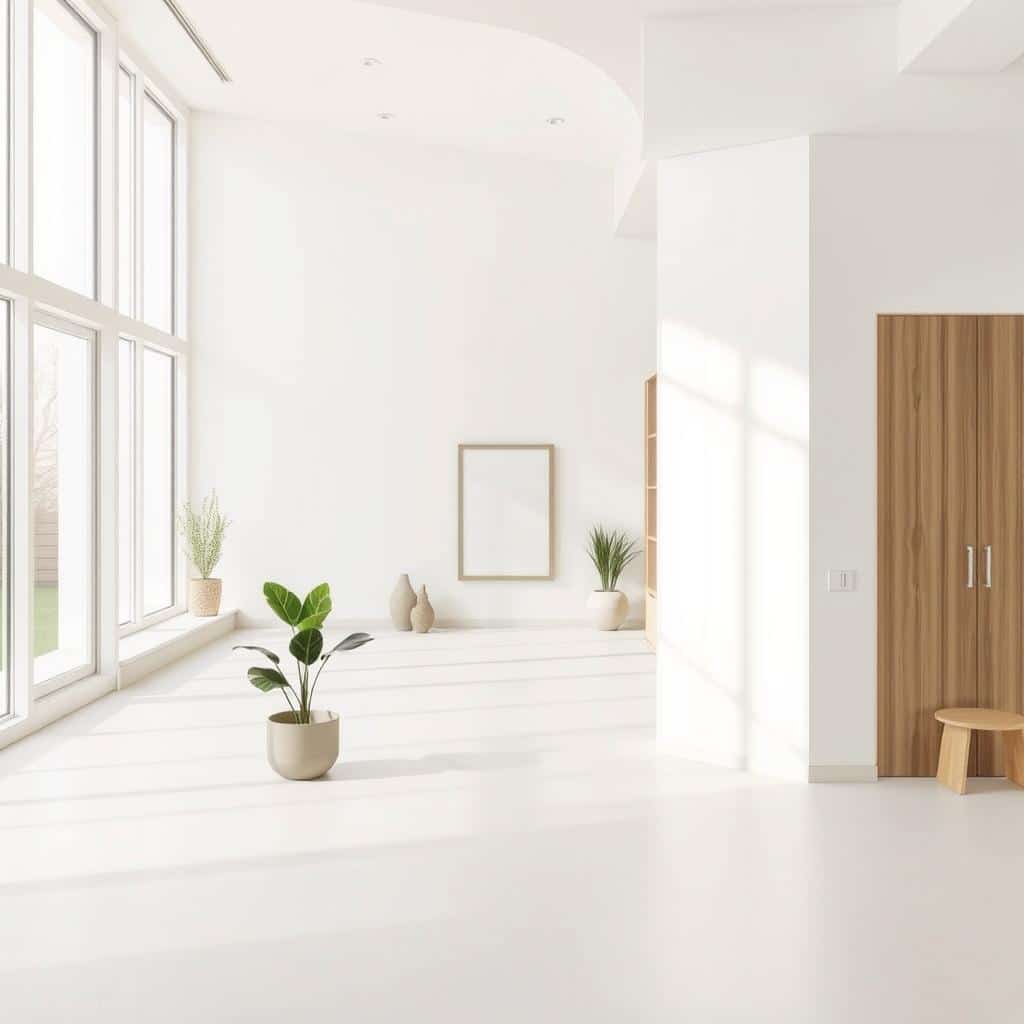
| Minimalist Design Principles | Personalizing Minimalist Spaces |
|---|---|
| Simplicity and clarity | Purposeful decor with sentimental value |
| Intentional reduction of excess elements | Unique and expressive accents |
| Highlighting the essential | Layered textures for depth and warmth |
| Neutral color palettes | Quality over quantity in furnishings |
By mixing minimalist design with personal touches, you can create a space that looks good and feels like you. The trick is to be intentional with both. Make sure every piece has a purpose and adds to the overall look.
Maintain Your Minimalist Space
Keeping a minimalist home is a continuous effort, not just a one-time task. To keep your space minimalist, you need to declutter regularly and think carefully about new items. Choose quality over quantity and be mindful of what you bring into your home.
Living minimally is a choice, not just a trend. By regularly checking your belongings and surroundings, you can keep your home true to your values. Here are some tips for maintaining a minimalist interior:
- Regularly declutter your space. Go through your belongings and remove anything you no longer use or love.
- Be mindful of new purchases. Ask yourself if an item aligns with your minimalist aesthetic and adds value to your home.
- Keep surfaces clean and organized. Minimize decorative items and opt for a clean, uncluttered look.
- Prioritize quality over quantity. Invest in durable, versatile pieces that will stand the test of time.
- Maintain a neutral color palette. Stick to soothing, natural tones to create a serene and cohesive atmosphere.
By following these strategies, you can keep your minimalist space simple and peaceful. Remember, minimalism is a way of life. With commitment, your home can remain a calm, clutter-free haven.
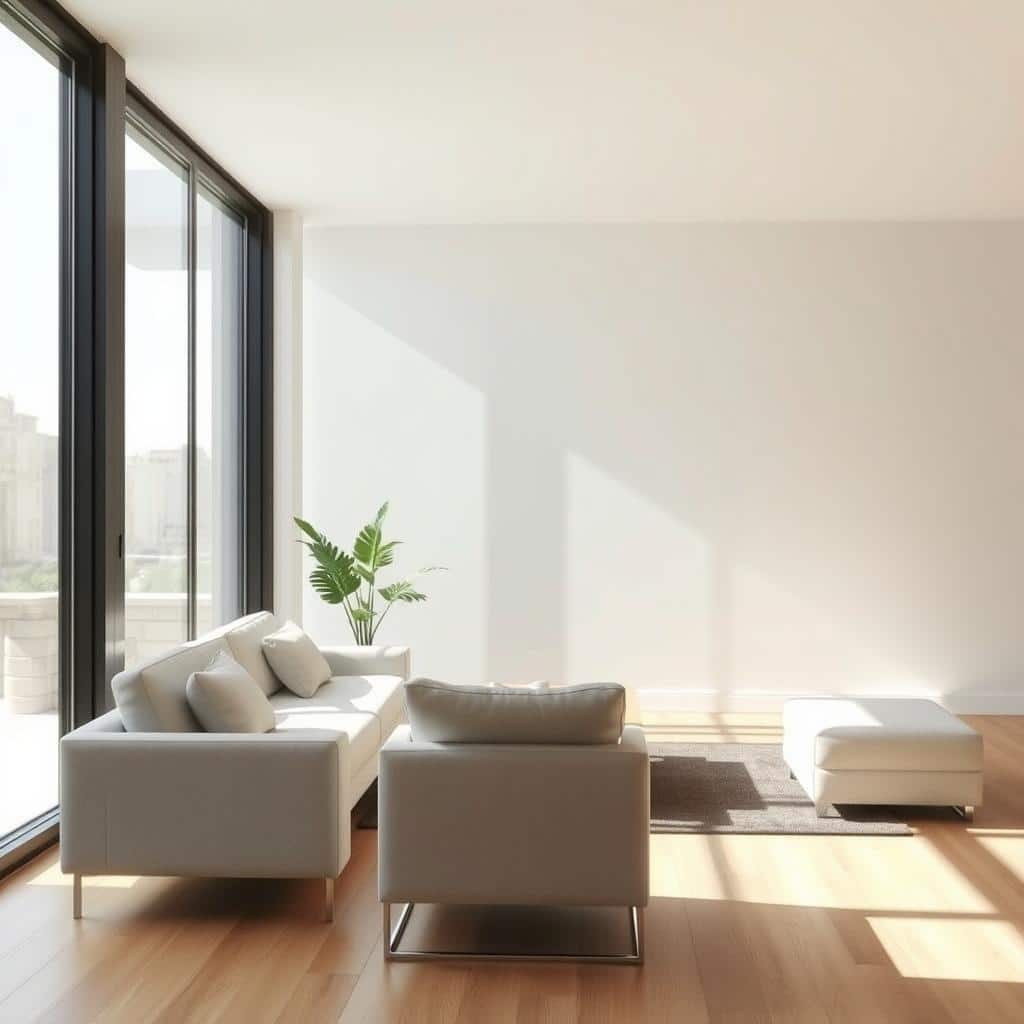
Conclusion
Minimalist interior design brings many benefits of minimalist interior design to your home. It creates a calm, clutter-free space. This design makes your home easier to maintain and supports a green lifestyle.
To start, clear out clutter and pick neutral colors. Add natural elements for warmth and texture. Choose furniture that serves a purpose and keeps your space open. This makes your home feel airy and intentional.
Remember, balance minimalism with personal touches. Add items that show your style and make your home special. Minimalist design helps you focus on what’s important. It turns your home into a place that supports your well-being.
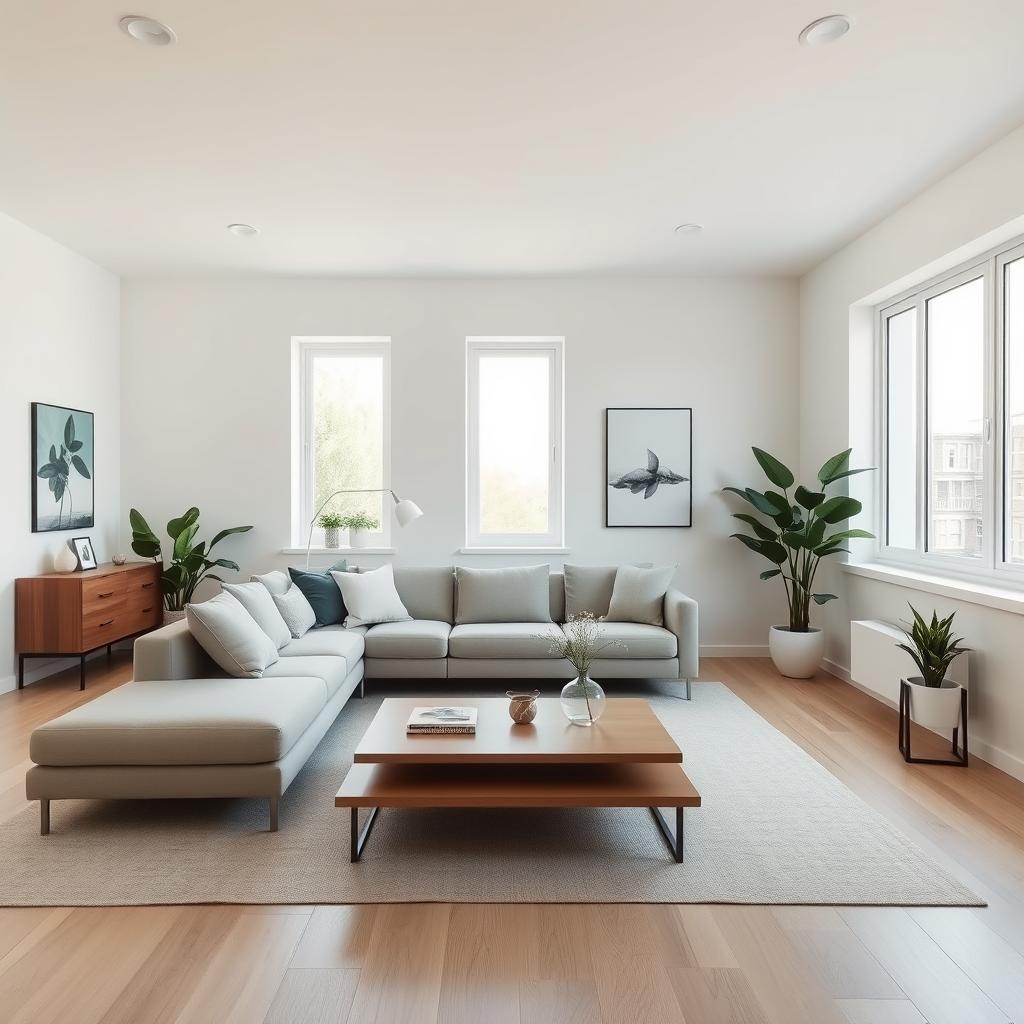
FAQ
What is minimalist interior design?
Minimalist interior design is all about simplicity and harmony. It focuses on clean lines and quality over quantity. You’ll see neutral colors and furniture that does more than one thing.
What are the key characteristics of minimalist spaces?
Minimalist spaces are open and airy. They use natural elements like wood and plants. The furniture is functional and versatile, creating a calm environment.
What are the benefits of embracing minimalist interior design?
Minimalist spaces are calm and clear. They improve your physical and mental health. Plus, they’re easy to clean and support sustainable living.
How do I start decluttering for a minimalist home?
Start by decluttering. Sort your belongings into keep, donate, and discard piles. Keep only what’s functional or brings you joy.
What color palette works best for minimalist design?
Whites, beiges, and soft grays are great. They make spaces feel calm and open. These colors are versatile and easy to mix with other pieces.
How can I incorporate natural elements into a minimalist home?
Add warmth with wood, stone, and plants. They bring texture and tranquility. This balances the clean lines of minimalist design.
What type of furniture works best in a minimalist interior?
Choose furniture that does more than one thing. Pieces like storage ottomans and extendable tables save space. They keep your home clutter-free.
How can I create a sense of openness in a minimalist home?
Use an open layout to make spaces feel larger. Arrange furniture to allow easy movement. Leave some areas empty for a sense of openness.
How can I personalize a minimalist interior without losing the aesthetic?
Use a neutral background and add meaningful accents. Choose statement pieces that reflect your style. This way, you can personalize without losing the minimalist look.
What are some tips for maintaining a minimalist home?
Keep your home minimalist by decluttering often. Make mindful purchases and keep surfaces clean. Focus on quality and be intentional with what you bring into your space.
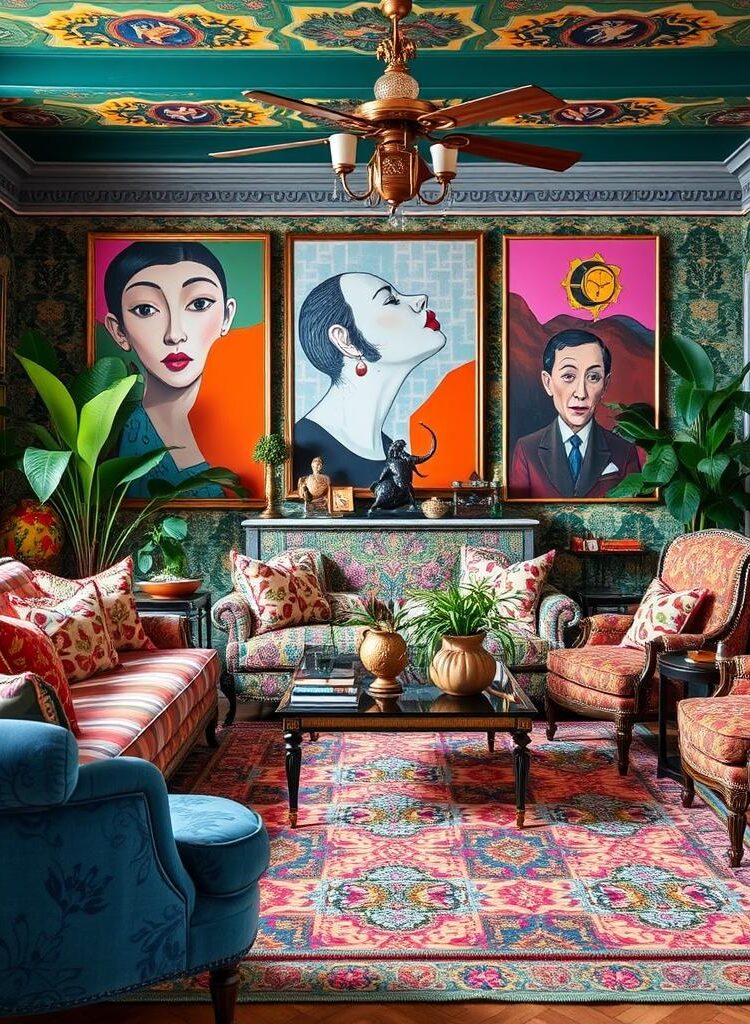
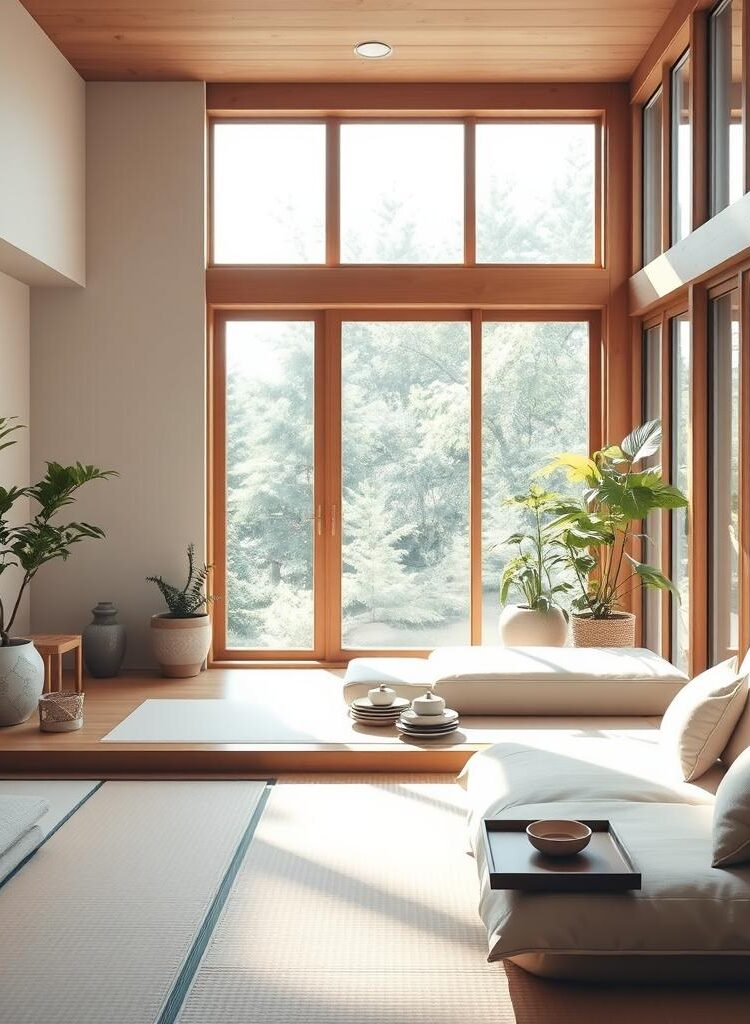
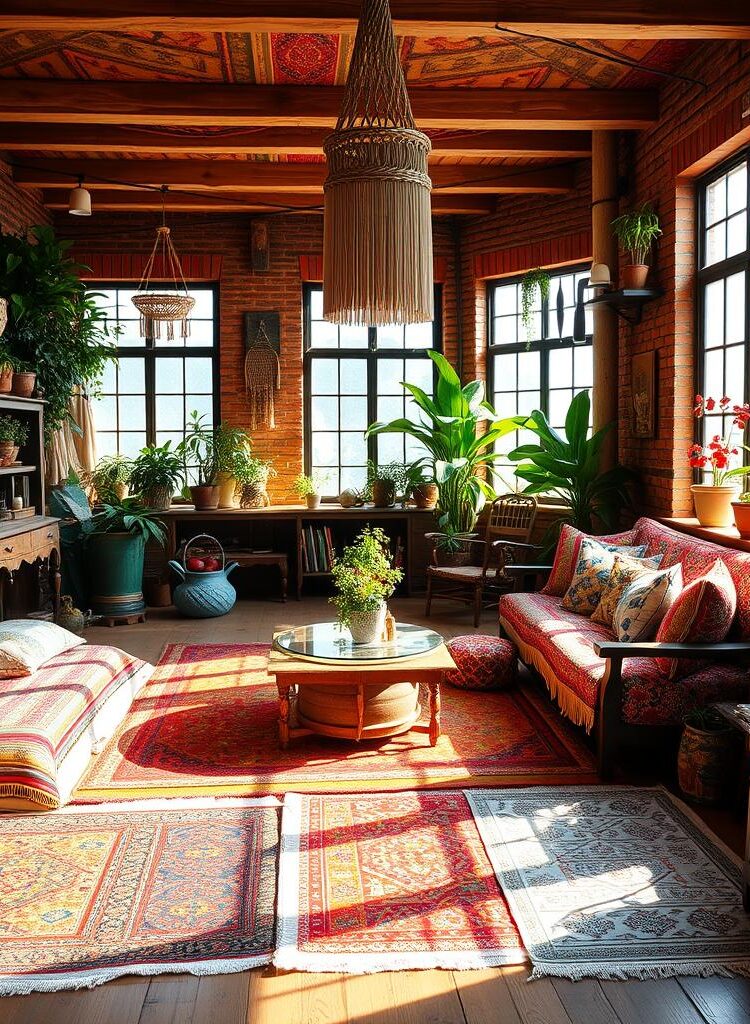

Leave a Reply